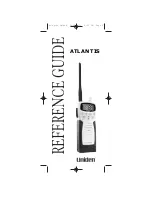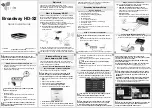
Channel Selection
The transceiver is capable of operation on 240 channels which are divided into 6
groups of 40 channels - A,B,C,D,E and F. These groups are selected with the Band
Selector switch as the following.
Band switch
Position
Frequency Range
A
26.065 to 26.505
MHz
B
26.515 to 26.955
MHz
C
26.965 to
27.405 MHz
D
27.415 to
27.855 MHz
E
27.865 to
28.305 MHz
F
28.315 to
28.755 MHz
After the band to which the channel you desire to operate belongs is selected, rotate
the channel selector to find the channel. Rotating the channel selector clock-wise or
counterclockwise by 1 detent will tune the transceiver 10 kHz upscale or downscale.
C If you desire to operate on 27.405 MHz first set the Band selector switch to `c`,
then turn the channel selector to the position at which the channel readout shows
40 .
Operation
(1) Turn the Volume control clockwise to apply power to the transceiver. The LED
display should be illuminated.
(2) Rotate the Squelch control counterclockwise fully.
(3) Select the mode of reception AM, FM.
(4) Set the RF Gain control maximum position.
(5) Select the channel desired.
(6) To transmit, depress the transmit switch on microphone, to receive, release
the switch.
RF Gain Control Ajustment
Normally, this control should be set to Max. Position to provide maximum receiver
sensitivity for long range reception. However, When communicating with a nearby
station, you may find that the strong signal from this station may cause overloading
of your receiver. In such a case. You can sue this control to reduce the receiver Sen-
sitivity and thus prevent any overloading and distortion that may occur as a result of
the extremely strong incoming signals. First set the switch to center and if this posi-
tion will not provide a sufficient reduction of overloading condition, set to minimum
Position.
i
10
‘
’






























